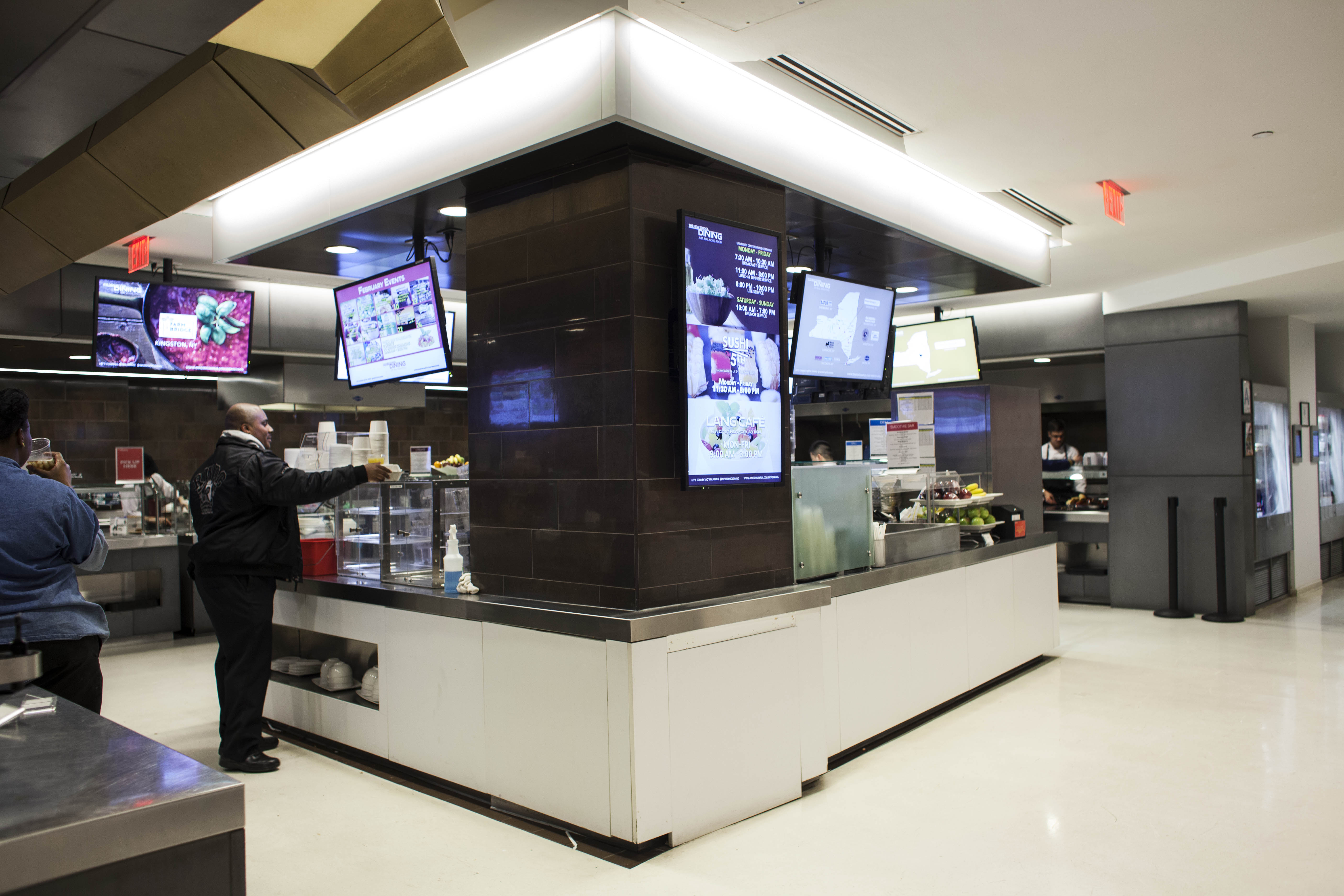If Fathima Nazeer, a Lang junior and Interdisciplinary Science major, doesn’t bring a lunch to school, the cafeteria at the University Center isn’t really an option for her.
“I see my friends eating the chicken fried breasts and they’re like, ‘It tastes good!’ and I’m like, ‘I wish!” Nazeer said.
Because Nazeer is a practicing Muslim, she only eats meat that has been prepared halal, or what she described as “meat cut in a proper Islamic manner.” Because of this, she finds that there are few healthy, satisfying options offered on-campus for her needs, a sentiment echoed by a number of other students for various reasons.
Though the New School cafeteria has made a great effort in recent years to offer more sustainable, organic meals, the cafeteria’s healthy, accommodating brand actually does not cater to the dietary needs of all students. This can be inconvenient for some students who struggle to eat all of their meals on campus, especially as students living in the dorms are automatically enrolled in the most expensive meal plan, or the “Max” meal plan, which costs $1,700 per semester.
“Yesterday I was here from ten o’clock. I had three classes. I was very hungry, but I couldn’t go to the cafeteria because I knew they wouldn’t have the food that I need. I went out and got a halal chicken over rice for $6,” Nazeer said.
Nazeer usually brings a lunch from home, knowing that there are little-to-no options for her on campus, and few options in the neighborhood.
“My friends think, ‘Oh, it’s just chicken, you can eat it.’ They don’t think if it’s halal or not. I’m very heavy on what I eat, so [being on campus has] made me very conscious, and it made me eat less and less because I don’t have many options to eat,” Nazeer said.
Sometimes Nazeer will eat in the cafeteria, getting pizza, fries, or a salad, but she also has to be conscious about what utensils are used to prepare what she gets because, in practicing Islam, she prefers not to eat with anything that touches pork.
For students with food allergies like Parsons freshman and Fashion Design major Megan Taylor, it can also be challenging to find enough meals to eat on campus. Taylor, who is lactose-intolerant and has Celiac Disease, meaning she cannot have gluten, often has to repeat meals with her meal plan “Dining Dollars.”
“The cafeteria does have some gluten-free and dairy-free options, although [they’re] limited. I usually find myself eating the same meals every day. There are options, though I do think they should expand the variety [of] gluten-free options,” Taylor said.
Taylor said that while there are a few gluten-free dishes, she wishes that there could be even more, and that gluten should not be added to meals when it isn’t necessary.
“It can be frustrating when you see a dish that is basically vegetables and find out it contains gluten on the allergens list. It’s like, why is that even necessary?” she said. “Sometimes, when I want to have nuts, salads, bean dishes, casseroles, [or] even soups, I can’t have them because for some reason it says that it contains gluten.”
New School Dining Services does make an effort to make the food offered on campus accommodating for all students. Jessica Roberts, Director of Sustainability and Campus Operations for New School Dining, said Dining Services works to plan meals that fit the needs of everyone “through discussions, comment cards, suggestions, menu mix, and current trends.”
In recent years, Roberts said Dining Services has tried to expand the amount of vegan and vegetarian options available after receiving feedback from students calling on them to offer “more alternative proteins and meat-free meals,” Roberts said.
Dining Services also tries to keep student food allergies in mind in what they prepare. Allergen controls and cross-contamination reduction techniques are part of the preparation process, Roberts said, and likely allergens are reduced from ingredients and menu items offered.
“We are not, however, able to be a completely allergen free facility, especially as some of our lines are a ‘serve yourself’ model and consumers may accidentally cross-contaminate products as well,” Roberts said.
As for religious dietary needs, Roberts said Dining rarely receives student requests that pertain to these preferences. Other than the kosher to-go meals offered in the University Center cafeteria, there aren’t really any options that cater to religious practices.
“We rarely have requests for these dietary needs as the meal plan is not mandatory but we do attempt to accommodate if requested,” Roberts said. “Our facility is not capable of producing separate meals, as we have one main kitchen supplying the majority of our freshly prepared daily menu items.”
For some students with dietary preferences who live on campus like Parsons freshman and Fashion Design major Larissa Sehringer, being removed from the meal plan can actually be the best option.
Sehring, who is vegetarian, recently removed herself from the meal plan because she felt there were limited healthy options for her. Overall, she said that the meal plan was a “waste of money” for her.
“They do have a lot of vegetarian,” Sehringer said, “but my thing is that I don’t want carbs or something really heavy, so I feel like other than that, that just left salad or a veggie burger, but I don’t want that everyday.”
Now, though Sehringer is restricted to a mini-fridge and microwave in her dorm room, she said she feels more satisfied.
“I wouldn’t say they’re not accommodating, but I would say the more specific [your dietary needs are], it’s harder to find something,” Sehringer said.
Photo by Julia Himmel







